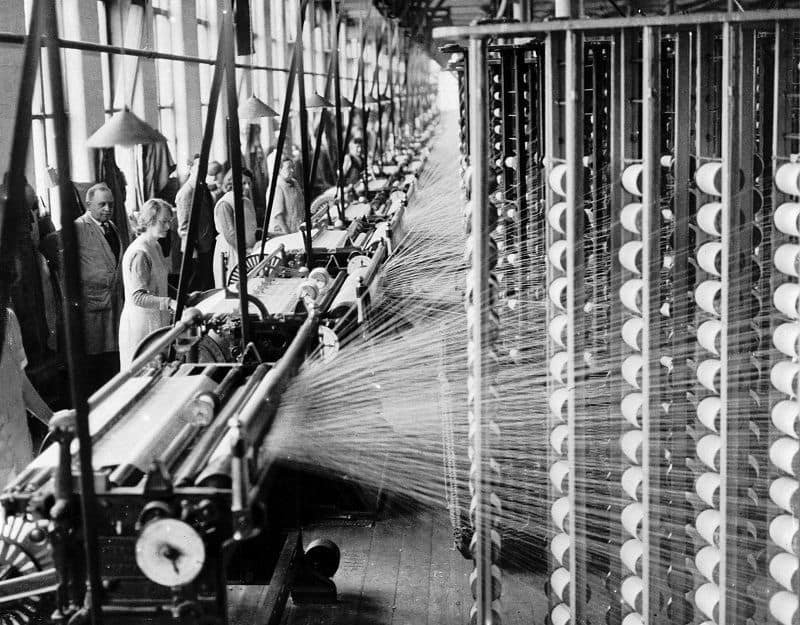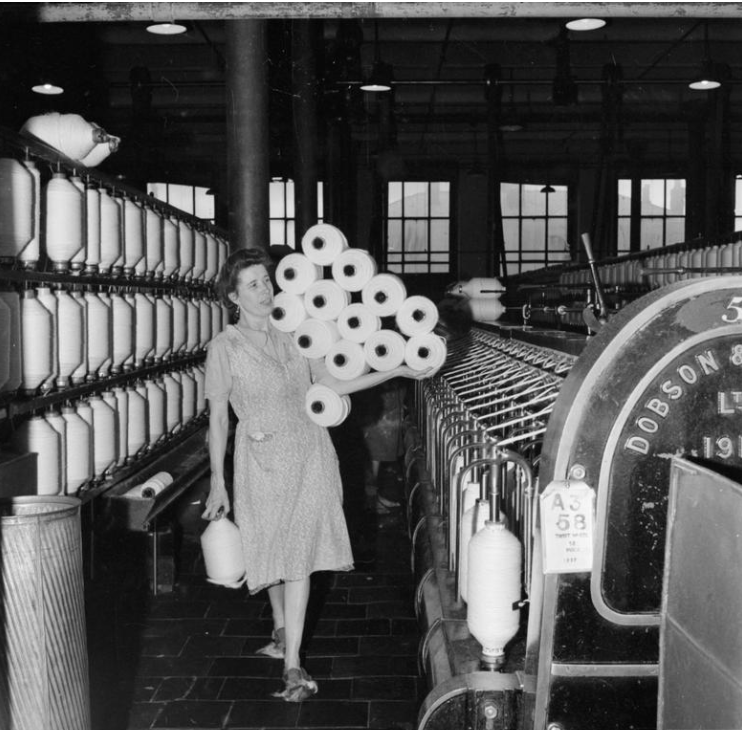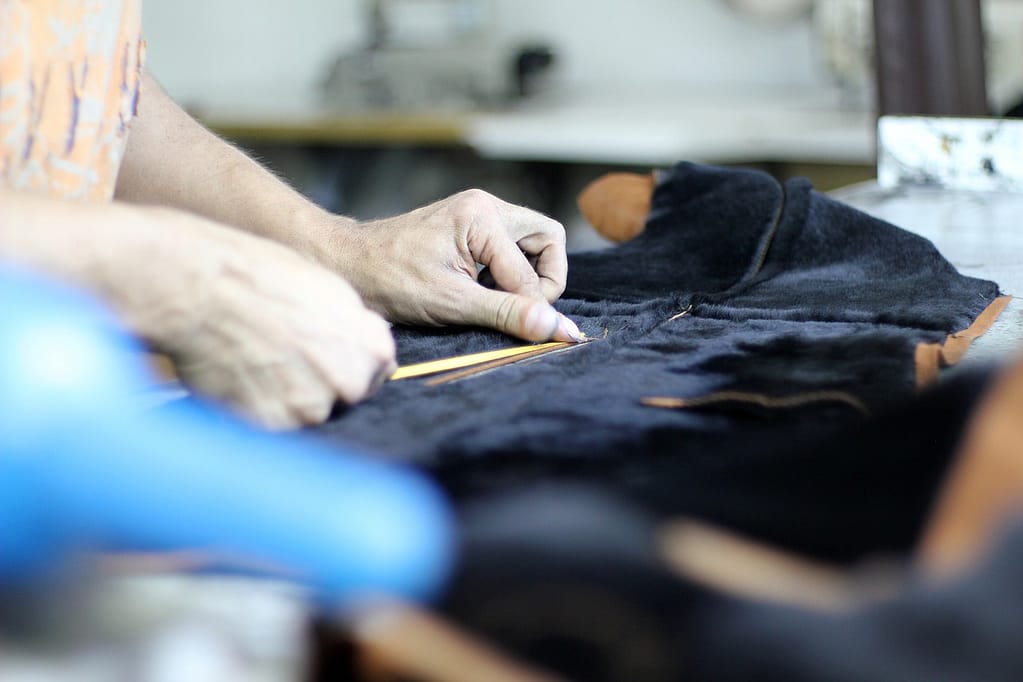For centuries, the UK has been known for its high-quality clothing manufacturing industryFrom the Lancashire mills of the 18th century to the high-street fashion of today, the country has undergone an incredible transformation.

During the 18th and 19th centuries, the UK experienced its glory days in the clothing manufacturing industry. This was a time when the country was at the forefront of textile production and its clothing manufacturing capabilities were unmatched.
The Lancashire mills, located in the heart of the UK’s textile industry, played a vital role in this history. Powered by steam engines, these mills were at the forefront of the industrial revolution, driving innovation and transforming the country’s clothing manufacturing industry. Skilled workers operated the machinery with meticulous precision, producing textiles that were exported to every corner of the world.
At the height of its success, the UK clothing industry was renowned for its craftsmanship and attention to detail. British-made clothing became synonymous with quality and style, sought after by fashion-forward individuals across the globe. This reputation extended beyond textiles and included the production of accessories, shoes, and outerwear, making it a comprehensive and thriving industry.
The rise of the high street fashion phenomenon marked another milestone in the industry’s history. As demand for fashionable clothing at affordable prices grew, retailers emerged to cater to this need. High street brands, supplied by the UK’s clothing manufacturing industry, became the go-to for stylish individuals looking to stay on-trend without breaking the bank.
The glory days of UK clothing manufacturing were characterised by innovation, skilled craftsmanship, and a commitment to producing the finest textiles and garments in the world. This era laid the foundation for the industry’s reputation as a leader and continues to influence the fashion landscape today.

The Decline of the UK Clothing Industry
As the 20th century progressed, the UK clothing industry faced significant challenges that led to its decline. One of the main factors was the emergence of cheap labour markets in developing countries. As globalisation increased, companies began to outsource their production to countries where labour costs were significantly lower. This shift allowed companies to produce clothing at a fraction of the cost compared to manufacturing in the UK.
Another contributing factor was the rise of fast fashion. With consumers demanding the latest trends at affordable prices, retailers turned to countries with low production costs to meet the demand. Fast fashion brands started to dominate the market, offering clothing at prices that UK manufacturers couldn’t compete with.
Furthermore, changes in consumer behaviour also impacted the industry. With the rise of online shopping, consumers were no longer limited to purchasing from physical stores. They could easily compare prices and buy from international retailers, making it harder for UK manufacturers to stay competitive.
Additionally, the decline of traditional skills and training opportunities also played a role. As manufacturing moved overseas, there was a decrease in the number of skilled workers and apprenticeships available. This lack of skilled labour further hindered the UK clothing industry’s ability to compete.
Despite these challenges, there are signs of a potential resurgence. Some brands are embracing the concept of “slow fashion,” focusing on quality, sustainability, and ethically-made clothing. Additionally, there is a growing demand for British-made products, with consumers increasingly valuing transparency and supporting local businesses.
To revitalise the industry, it will require a combination of investment in skills training, government support, and consumer demand for locally-made, sustainable fashion. Only with these efforts can the UK clothing industry hope to regain its former glory and once again be known for its high-quality, British-made garments.
Reasons for the Decline
As we delve into the decline of the UK clothing industry, several factors come to light, ultimately leading to its downfall. One of the main culprits was the rise of cheap labour markets in developing countries. As the world became more globalised, companies began to outsource their production to countries where labour costs were significantly lower. This shift allowed them to produce clothing at a fraction of the cost compared to manufacturing in the UK.
Additionally, the emergence of fast fashion played a significant role in the decline. With consumers constantly seeking the latest trends at affordable prices, retailers turned to countries with low production costs to meet the demand. Fast fashion brands flooded the market, offering clothing at prices that UK manufacturers simply couldn’t compete with.
Furthermore, changes in consumer behaviour also played a part. With the rise of online shopping, consumers were no longer limited to purchasing from physical stores. They could easily compare prices and buy from international retailers, making it harder for UK manufacturers to stay competitive.
Another contributing factor to the decline was the loss of traditional skills and training opportunities. As manufacturing moved overseas, there was a decrease in the number of skilled workers and apprenticeships available. This lack of skilled labour further hindered the UK clothing industry’s ability to compete.
It is clear that the decline of the UK clothing industry was a result of various factors working in tandem. However, despite these challenges, there is hope for a potential resurgence. The industry can look towards embracing the concept of “slow fashion,” focusing on quality, sustainability, and ethically-made clothing. Additionally, there is a growing demand for British-made products, with consumers increasingly valuing transparency and supporting local businesses. With the right combination of investment in skills training, government support, and consumer demand, the UK clothing industry has the potential to regain its former glory.
Can the UK Clothing Industry Rise Again?
The UK clothing industry has faced significant challenges in recent years, but there are signs that it may be able to rise again. One key factor that could contribute to its revival is the growing demand for sustainable and ethically-made fashion. As consumers become more aware of the environmental and social impact of fast fashion, there is a shift towards supporting brands that prioritise quality and sustainability.
In response to this demand, some UK clothing manufacturers are embracing the concept of “slow fashion.” These brands focus on producing high-quality garments that are made to last, using sustainable materials and ethical production practices. By offering an alternative to fast fashion, they are able to cater to a niche market that values quality over quantity.
Another factor that could drive the resurgence of the UK clothing industry is government support. The UK government has recognised the importance of the fashion industry and has launched initiatives to support British manufacturing. This includes investment in skills training and the promotion of British-made products both domestically and internationally.
Furthermore, the impact of Brexit could also play a role in revitalising the UK clothing industry. With the UK now operating outside of the EU, there may be opportunities for the country to establish new trade agreements and strengthen its position in the global market.
While there are challenges ahead, the potential for the UK clothing industry to rise again is evident. By embracing sustainability, receiving government support, and capitalising on new trade opportunities, the industry may be able to regain its former glory and once again be known for its high-quality, British-made garments.
Current State of UK Clothing Manufacturing
The current state of the UK clothing manufacturing industry is one of both challenges and opportunities. Over the past few decades, the industry has faced significant setbacks due to globalisation, fast fashion, and changes in consumer behaviour. However, there are signs of a potential resurgence, as the industry adapts to meet the demands of the modern market.
One of the main challenges faced by the UK clothing industry is the competition from low-cost manufacturing countries. As companies outsource production to countries with cheaper labour costs, it becomes harder for UK manufacturers to compete on price. This has resulted in a decline in the number of clothing manufacturing facilities in the UK, as well as a decrease in the skilled workforce.
However, despite these challenges, there are several factors driving the potential resurgence of the industry. One of the main factors is the increasing demand for sustainable and ethically-made fashion. Consumers are becoming more conscious of the environmental and social impact of their clothing choices, and they are seeking out brands that prioritise sustainability. This has created a niche market for UK clothing manufacturers who focus on producing high-quality, eco-friendly garments.
In addition, the UK government has recognised the importance of the fashion industry and has launched initiatives to support British manufacturing. This includes investment in skills training and promoting British-made products both domestically and internationally. The government’s support and commitment to the industry provide opportunities for growth and expansion.
Furthermore, the impact of Brexit could also play a role in the resurgence of the UK clothing industry. With the UK now operating outside of the EU, there may be opportunities for the country to establish new trade agreements and strengthen its position in the global market.
Overall, the current state of the UK clothing manufacturing industry is one of transition and adaptation. While challenges remain, there are clear opportunities for growth and revitalisation. By focusing on sustainability, receiving government support, and capitalising on new trade opportunities, the industry has the potential to regain its former glory and once again become a leader in the global fashion landscape.

Factors Driving the Resurgence
The UK clothing manufacturing industry has faced its fair share of challenges in recent years, but there are several factors that are driving its potential resurgence. One of the main factors is the growing demand for sustainable and ethically-made fashion. As consumers become more conscious of the environmental and social impact of their clothing choices, they are seeking out brands that prioritise sustainability. This has created a niche market for UK clothing manufacturers who focus on producing high-quality, eco-friendly garments.
Additionally, the UK government has recognised the importance of the fashion industry and has launched initiatives to support British manufacturing. This includes investment in skills training and promoting British-made products both domestically and internationally. The government’s support and commitment to the industry provide opportunities for growth and expansion.
Furthermore, the impact of Brexit could also play a role in the resurgence of the UK clothing industry. With the UK now operating outside of the EU, there may be opportunities for the country to establish new trade agreements and strengthen its position in the global market.
Overall, these factors are driving the potential resurgence of the UK clothing manufacturing industry. By focusing on sustainability, receiving government support, and capitalising on new trade opportunities, the industry has the potential to regain its former glory and once again become a leader in the global fashion landscape. The future looks bright for UK clothing manufacturing, and with the right combination of factors, we may witness its return to the heights of its glory days.